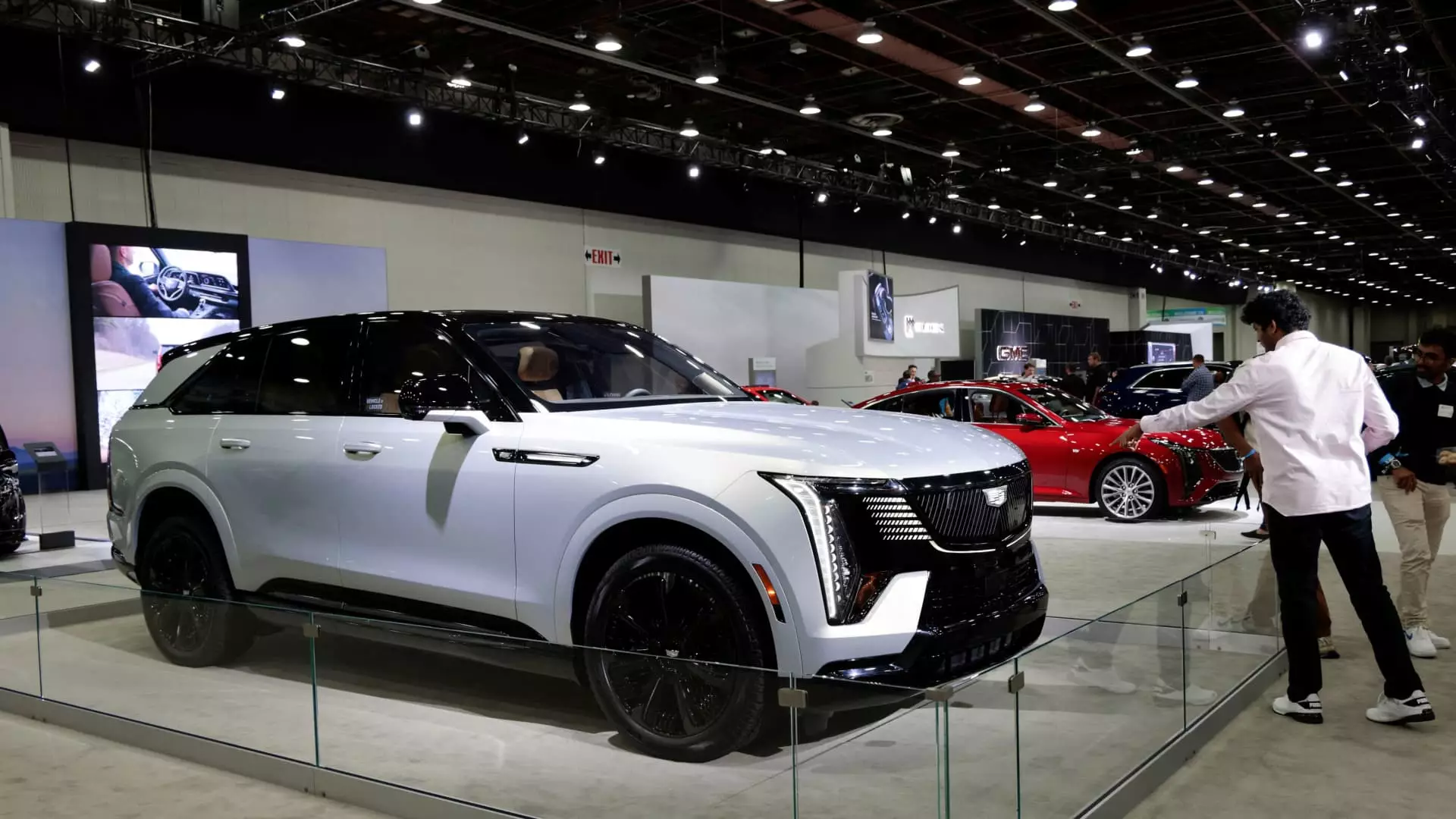Cadillac is not merely a legacy brand; it’s a phoenix rising from the ashes of traditional automotive mediocrity into the vibrant realm of electric vehicles (EVs). The all-electric Cadillac lineup, which now includes models like the Lyriq, Vistiq, and the extravagant Celestiq, signals a new dawn for American luxury. This bold stride toward electrification is not just about keeping pace with the EV revolution; it’s about stealing the spotlight from established players, notably Tesla. The brand has reported that nearly 80% of customers buying Cadillac EVs are newcomers to the brand, with a significant portion of them trading in their Teslas. This trend suggests a notable shift in consumer sentiment and a window of opportunity that Cadillac aims to exploit fully.
However, one must critically evaluate whether Cadillac’s current strategy is calibrated for sustained success or is merely a temporary trend. The surge in customers abandoning Tesla, drawn to the allure of Cadillac’s electric offerings, could be seen as a rebellion against the status quo in the EV market. While this exodus may appear beneficial to Cadillac in the short-term, the long-term viability of enticing former Tesla owners into new Cadillacs hinges on more than just product aesthetics or competitive pricing—it demands a genuine innovation in EV technology and customer experience.
The Political Quandary and Its Impact
In the backdrop of Cadillac’s burgeoning success is a less savory narrative—the politics surrounding Elon Musk. The tech mogul’s controversial support of Donald Trump and his strange forays into political discourse have tainted Tesla’s brand image, leading some customers to distill their dissatisfaction into actionable choices, such as crossing over to Cadillac. This phenomenon raises provocative questions about the intersection of politics and consumer loyalty in the automotive world.
Cadillac has tactically sidestepped this politically charged dynamic by focusing on the quality of their vehicles rather than engaging in political discourse. Brad Franz, Cadillac’s director of global marketing, insists that the brand isn’t “conquesting” Tesla customers because of Musk’s political views but instead due to the superior attributes of Cadillac’s electric offerings. Whether this is a shrewd marketing strategy or an evasion of an uncomfortable reality remains to be seen. It’s essential to consider that while Cadillac’s strategy may be apolitical on the surface, the implications of Musk’s political actions reverberate throughout the industry. For a brand striving for a luxurious image, aligning itself too closely with a political narrative, particularly one mired in controversy, could prove detrimental.
Understanding the Conquest Rate
The fact that Cadillac has seen a spike in Tesla trade-ins—25% higher than previous years—bespeaks a shifting tide in consumer preferences. Yet, this increase should not be overstated. While it speaks to Cadillac’s strategic maneuvering in the luxury EV segment, it also reveals an underlying landscape marked by transactional rather than transformational change. The consumers ditching their Teslas to buy Cadillacs may not necessarily be engaging in a thorough cross-shopping experience but rather opting for a clean break from dissatisfaction, often arising from Tesla’s issues with build quality and customer service.
In fact, data indicates that Tesla vehicles are not even on the radar for potential Cadillac buyers. The primary vehicles that current Cadillac shoppers are considering include other Cadillac EV models and various domestic brands. This lack of cross-shopping signifies that many former Tesla owners may be less enamored with the EV concept and more focused on finding a viable alternative. Cadillac, positioned as a luxury brand, must remember that simply catering to these new buyers doesn’t secure brand loyalty; interacting genuinely and meaningfully with them is critical.
Branding Beyond Electric Vehicles
As Cadillac ventures into the electrified future, it’s crucial to identify the potential pitfalls that could negate its current momentum. Relying solely on high-end specs and aesthetics could lead to complacency in brand perception. The ultimate goal should transcend merely outdoing Tesla. Cadillac must nurture an emotional bond with consumers, akin to what Apple has achieved in the tech realm. This requires more than just producing appealing vehicles; it demands building an ecosystem of lifestyle and experience that resonates on multiple levels.
Cadillac’s aim to be the best-selling luxury EV brand is ambitious. Still, it raises the question of what “luxury” signifies in an evolving automotive landscape where traditional hierarchies are taking a backseat to newer values based on sustainability, community, and ethical consumerism. Therefore, while Cadillac’s electric ambitions are commendable, there lies a more profound challenge: to forge a future where luxury is redefined—one that invites consumers not only to buy a vehicle but to join a transformative movement. Journeying into this realm, Cadillac must remain vigilant and responsive to the complex interplay of consumer sentiment, political narratives, and evolving market dynamics if it hopes to claim its rightful throne in the luxury EV market.

